Consider a uniformly charged hemispherical shell. What can you say about the direction of electric field at points on the equatorial plane. (e.g. point P)
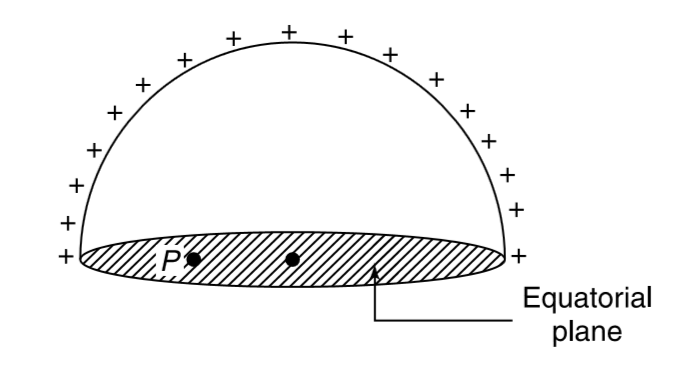
The correct Answer is:Perpendicular to the equatorial plane.
Step by step video, text & image solution for Consider a uniformly charged hemispherical shell. What can you say about the direction of electric field at points on the equatorial plane. (e.g. point P) by Physics experts to help you in doubts & scoring excellent marks in Class 12 exams.
Updated on:21/07/2023Topper's Solved these Questions
- ELECTROSTATICSBOOK - ARIHANTCHAPTER - ELECTROSTATICSEXERCISE - Level 3
59 Videos
- ELECTROSTATICSBOOK - ARIHANTCHAPTER - ELECTROSTATICSEXERCISE - Level 3
59 Videos
- ELECTROMAGNETIC INDUCTIONBOOK - ARIHANTCHAPTER - ELECTROMAGNETIC INDUCTIONEXERCISE - Level 3
12 Videos
- GEOMETRICAL OPTICSBOOK - ARIHANTCHAPTER - GEOMETRICAL OPTICSEXERCISE - Level 3
9 Videos
Similar Questions
Consider a uniformly charged thin spherical shell as shown in figure. Radius of the shell is R.
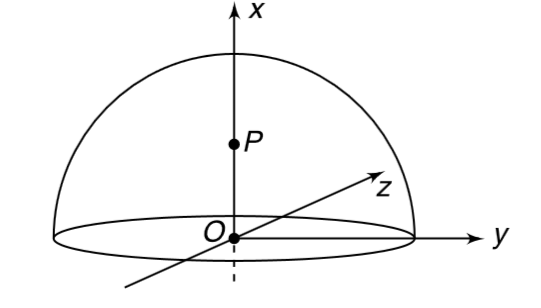
The electric field at point P(x,0,0) is →E what is the electric field at a point Q(−x,0,0) given x<R.
View SolutionWhat is the electric potential at a point on the equatorial plane of a short electric dipole?
View Solution
Knowledge Check
The angle between the dipole moment and electric field at any point on the equatorial plane is
A180∘B0∘C45∘D90∘Figure shows a uniformly charges hemispherical shell. The direction of electric field at point p that is off centre (but in the plane of the largest circle of the hemisphere), will be along
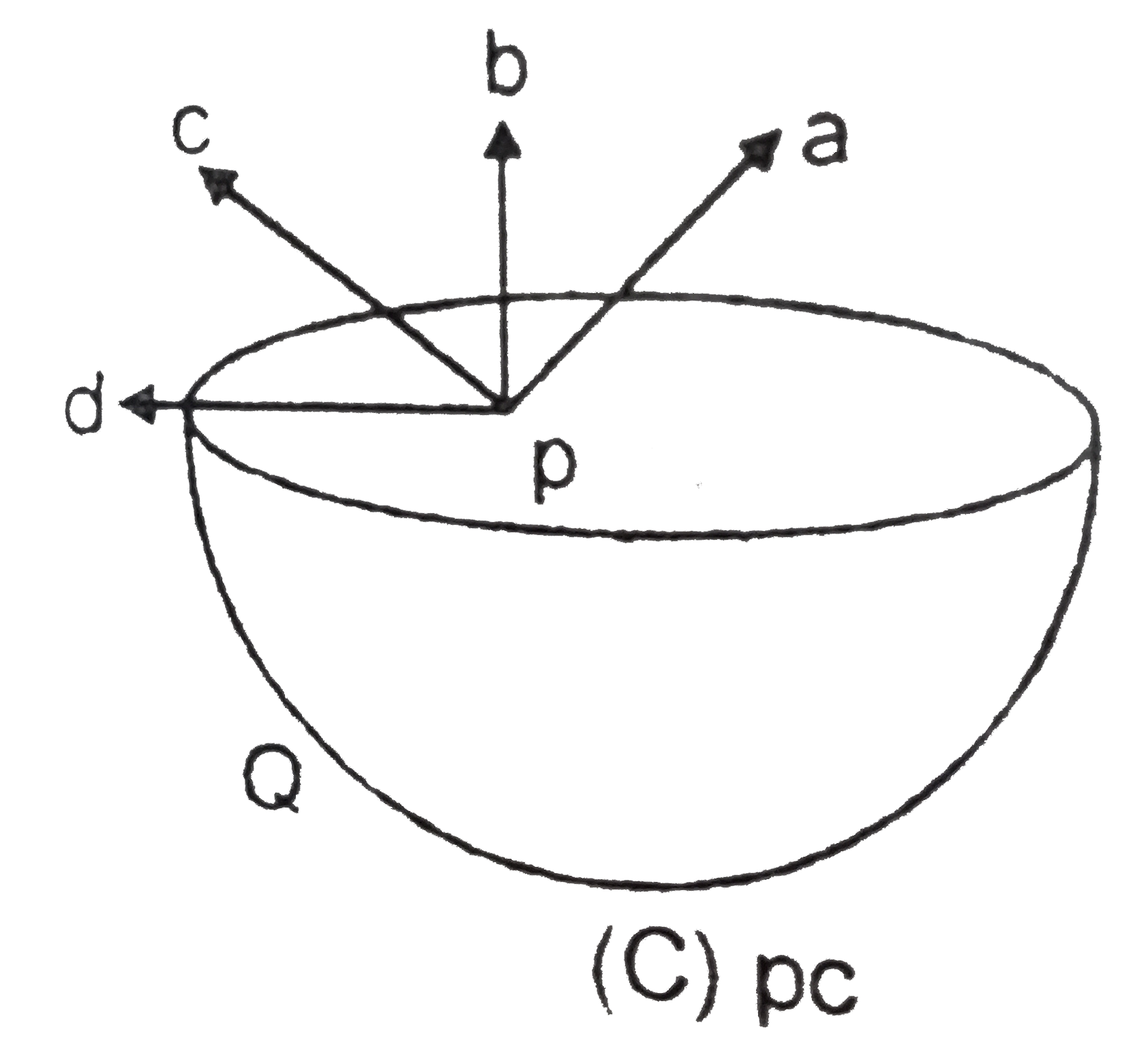 ApaBpbCpcDpd
ApaBpbCpcDpdConsider a uniformly charged hemispherical shell shown in figure. Indicate shown in figure. Indicate the directions (not magnitude) of the electric field at the central point P1 and an off-center point P2 on the drum-head of the shell.
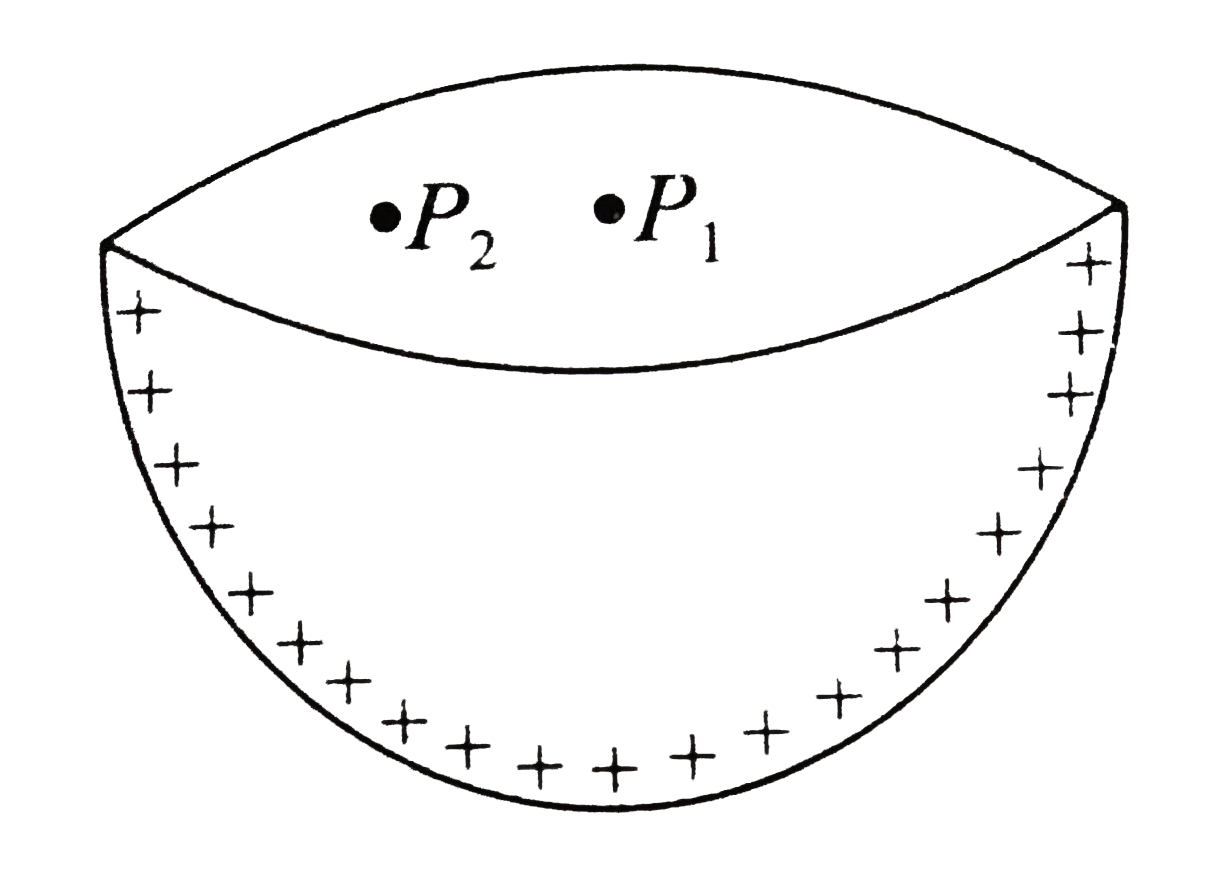 A↑,?B↑,?C↑,↑D↑,←
A↑,?B↑,?C↑,↑D↑,←
The magnitude and direction of the electric field at point P can be best represented by
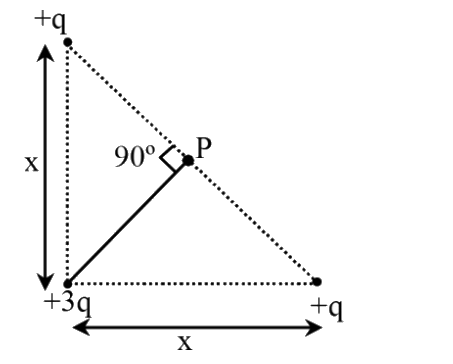
View SolutionWhat is the angle between the directions of electric field at any (i) axial point, (ii) equatorial point due to an electric dipole?
View Solution(a) Use Gauss's law to show that due to a uniformly charged spherical shell of radius R, the electric field at any point situated outside the shell at a distance r from its centre is equal to the electric field at the same point, when the entire charge on the shell were concentrated at its centre. Also plot the graph showing the variation of electric field with r, for r≤R and r≥R. (b) Two point charges of +1μC and +4μC are kept 30 cm apart. How far from the +1μC charge on the line joining the two charges, will the net electric field be zero ?
View SolutionFigure show a hemispherical shell having uniform mass density The direction of gravitational field at point P will be along
 .
.
View SolutionFigure shows a uniformly charged hemisphere of radius R. It has a volume charge density ρ. If the electric field at a point 2R, above the its center is E, then what is the electric field at the point 2R below its center?
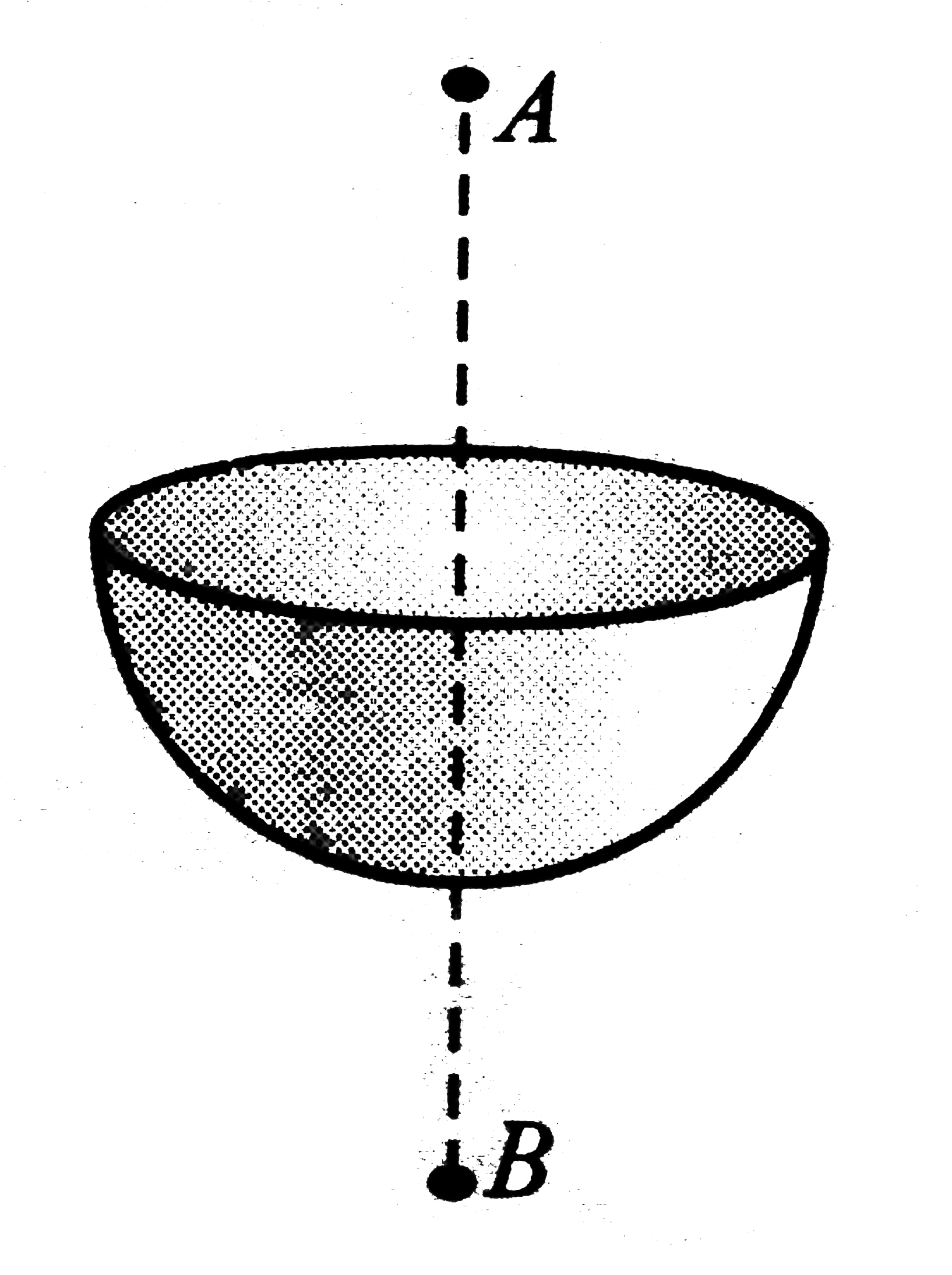
View Solution
